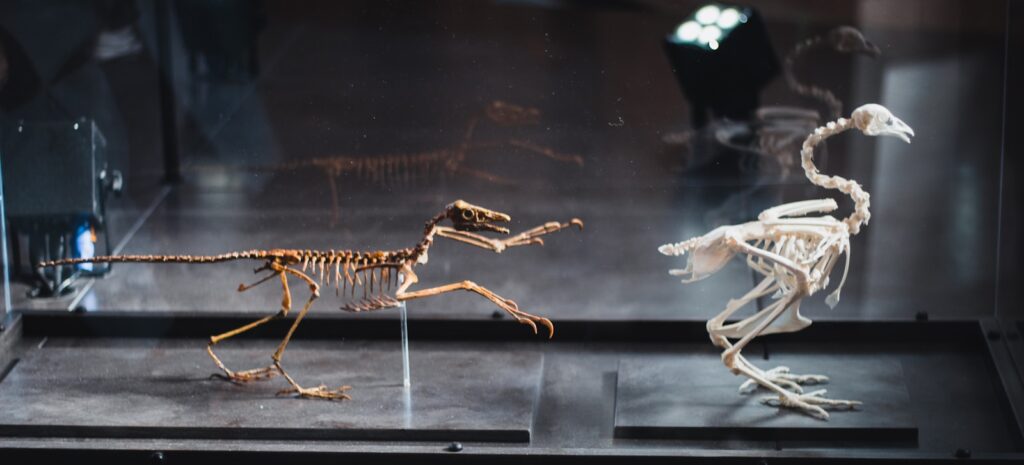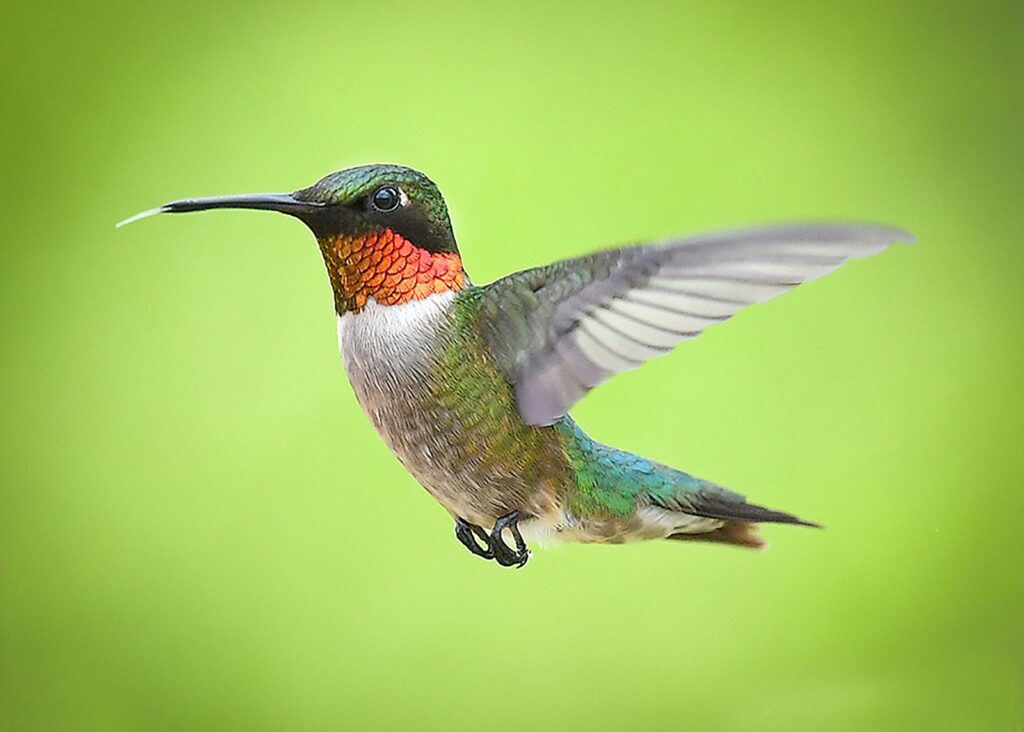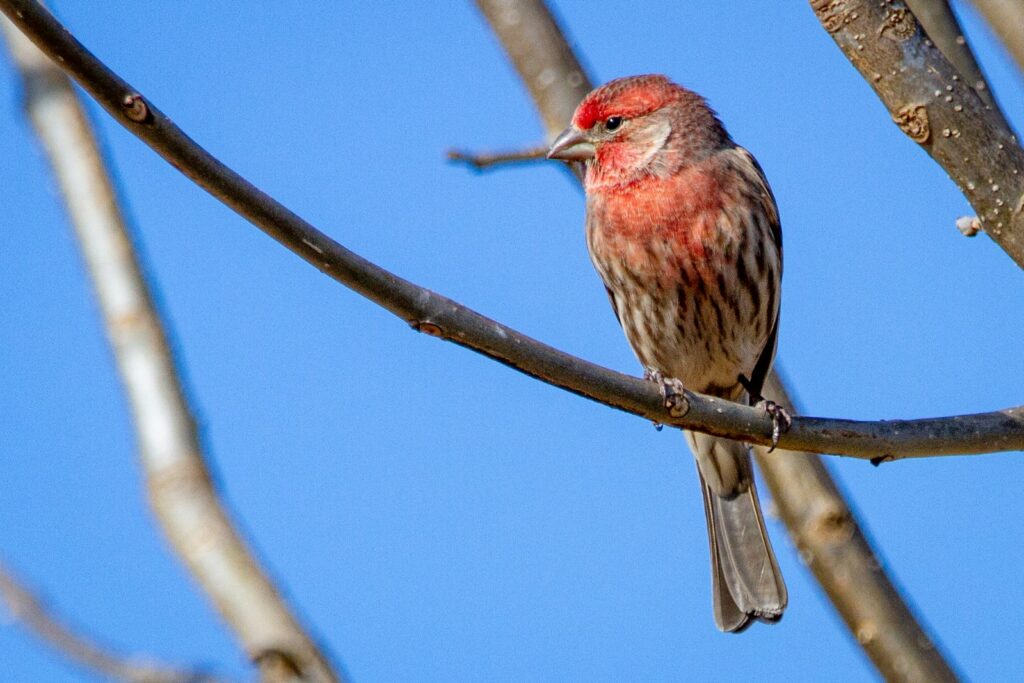When we look at a sparrow flitting between trees or watch an eagle soaring overhead, we’re witnessing living dinosaurs in action. This isn’t poetic license or scientific hyperbole – it’s an evolutionary fact. Modern birds aren’t just related to dinosaurs; they are dinosaurs, specifically avian dinosaurs that survived the mass extinction event that wiped out their non-avian relatives 66 million years ago. While traditional classification placed birds alongside reptiles, contemporary scientific understanding has dramatically shifted this perspective. The evidence linking birds directly to theropod dinosaurs has become so overwhelming that it’s reshaped our understanding of evolutionary history. This article explores the fascinating evidence and implications behind the statement that birds are more dinosaur than reptile, revealing how your backyard feathered visitors carry the genetic and anatomical legacy of some of history’s most fearsome predators.
The Evolutionary Timeline: From Dinosaur to Bird

The transition from dinosaur to bird didn’t happen overnight but through millions of years of evolutionary refinement. This remarkable journey began over 150 million years ago with small, feathered theropod dinosaurs in the Late Jurassic period. Archaeopteryx, often cited as the earliest known bird-like dinosaur, lived about 150 million years ago and possessed a fascinating mix of dinosaurian and avian features. Over subsequent millions of years, these dinosaur ancestors gradually developed more bird-like characteristics: hollow bones became lighter, forelimbs evolved into wings, and body size generally decreased while metabolic rates increased. This wasn’t a straight line of evolution but rather a complex branching process where various dinosaur lineages independently developed bird-like traits. The Cretaceous period witnessed an explosion of diverse bird-like dinosaurs, with the ancestors of modern birds differentiating from other dinosaur lineages approximately 100 million years ago. When the catastrophic asteroid impact triggered mass extinction 66 million years ago, only one lineage of these avian dinosaurs survived, eventually giving rise to all modern bird species.
The Telltale Skeletal Structure

Bird skeletons reveal their dinosaurian heritage in numerous unmistakable ways. Perhaps most striking is the furcula, or wishbone, which first appeared not in birds but in theropod dinosaurs like Allosaurus and Velociraptor. The three-toed foot structure of birds directly mirrors that of their dinosaur ancestors, with the same arrangement of bones and joints. Birds possess a unique wrist joint that allows them to fold their wings against their bodies—this same joint structure evolved in non-avian dinosaurs before the first birds appeared. Modern birds’ hollow, pneumatic bones, once thought to be a unique avian adaptation for flight, were present in many non-avian dinosaurs, including those too large to fly. The pubic bone in birds points backward, a feature shared with theropod dinosaurs but different from most reptiles. Even the distinctive skull structure of birds, with its kinetic capabilities allowing the upper jaw to move independently from the braincase, evolved first in their dinosaur ancestors. These skeletal similarities aren’t merely superficial resemblances but deep structural homologies that point to birds’ direct evolutionary descent from theropod dinosaurs.
Feathers: Not Just For Birds

Feathers, long considered the defining feature of birds, actually originated in dinosaurs tens of millions of years before the first true birds evolved. Fossil discoveries since the 1990s have revolutionized our understanding of feather evolution, revealing that many non-avian dinosaurs were covered in feathers of various types. Species like Sinosauropteryx and Yutyrannus sported primitive filamentous feathers, likely used for insulation rather than flight. More advanced dinosaurs like Microraptor had fully-formed, asymmetrical flight feathers on both their arms and legs, suggesting that four-winged gliding may have preceded the evolution of powered flight. Even velociraptors, famously depicted as scaly in popular media, possessed arm feathers as evidenced by the quill knobs found on their forearm bones—the same structures found in modern birds where flight feathers attach. The discovery of feathered tyrannosaur relatives suggests that even T. rex might have had some feathery covering, at least during part of its life. The presence of feathers across diverse dinosaur lineages indicates that the common ancestor of all dinosaurs may have possessed primitive feather-like structures, making feathers fundamentally a dinosaurian rather than strictly avian feature.
Physiological Similarities: Warm-Blooded Dynamics

Birds stand apart from typical reptiles in being fully warm-blooded (endothermic), maintaining high, constant body temperatures through metabolic processes. Remarkably, compelling evidence suggests many non-avian dinosaurs shared this trait, placing birds’ physiology firmly in the dinosaurian rather than reptilian camp. Research on dinosaur bone microstructure reveals growth patterns consistent with high metabolic rates required for endothermy. The presence of respiratory air sacs in many dinosaur fossils, identical to the efficient breathing system found in modern birds, further supports their high-energy metabolism. Some dinosaur fossils even preserve evidence of insulating coverings like feathers and fur-like structures that would have helped retain metabolically generated heat. Studies examining oxygen isotopes in dinosaur teeth suggest body temperatures significantly above ambient temperatures, a telltale sign of endothermy. Recent research on molecular fossil evidence indicates that dinosaurs likely possessed uncoupling proteins, specialized molecules that generate body heat through metabolic processes—the same proteins that help birds maintain their high body temperatures. These multiple lines of evidence strongly suggest that birds inherited their warm-blooded nature not as a new adaptation but directly from their dinosaurian ancestors.
Reproductive Behavior: Nests, Eggs, and Parental Care

The reproductive strategies of birds differ markedly from those of most reptiles but show striking similarities to those of their dinosaur ancestors. Modern birds typically build nests, lay relatively few eggs, and provide extensive parental care—behaviors now known to have originated in non-avian dinosaurs. Fossil discoveries have revealed numerous dinosaur species preserving nesting behaviors, including Maiasaura (“good mother lizard”), found with hatchlings in nest structures suggesting extended parental care. Unlike most reptiles, which typically bury their eggs and abandon them, many dinosaurs arranged their eggs in circular patterns and likely incubated them directly, just as birds do today. The microstructure of dinosaur eggshells closely resembles that of bird eggs rather than reptilian eggs, featuring multiple layers and porous construction. Perhaps most telling is the discovery of adult oviraptor fossils preserving brooding postures identical to those of modern birds, with their limbs arranged symmetrically over nests of eggs. Certain dinosaur fossils even show evidence of sequential egg-laying, producing one egg at a time rather than simultaneous clutches—a distinctly bird-like trait not seen in reptiles. These shared reproductive strategies represent not convergent evolution but direct inheritance, with birds continuing reproductive patterns established by their dinosaur ancestors over 100 million years ago.
The Respiratory System: Air Sacs and Efficient Breathing

Birds possess one of the most efficient respiratory systems in the animal kingdom, fundamentally different from the breathing mechanism of reptiles. This avian system features air sacs that allow for continuous, one-way flow of air through the lungs, enabling birds to extract oxygen even at high altitudes where the air is thin. Remarkably, this system didn’t evolve in birds but was inherited directly from their dinosaur ancestors. Paleontologists have discovered evidence of air sacs in numerous dinosaur fossils, with telltale pneumatic foramina (holes where air sacs penetrated bone) present in theropods, sauropods, and other dinosaur groups. CT scans of dinosaur vertebrae reveal internal structures perfectly matching the air-filled chambers connected to respiratory systems in modern birds. The presence of these respiratory features across various dinosaur groups suggests this efficient breathing system evolved early in dinosaur evolution, long before the appearance of birds. Some researchers speculate that this advanced respiratory system provided dinosaurs with the metabolic capacity to grow to enormous sizes or sustain active predatory lifestyles. The fact that no other reptiles possess this distinctive breathing apparatus, while it appears consistently in both birds and their dinosaur ancestors, provides compelling evidence that birds inherited their respiratory system through direct dinosaurian descent rather than convergent evolution with reptiles.
Behavioral Connections: Sleep Positions and Social Structures

The behavioral similarities between birds and certain dinosaurs extend beyond basic physiology into specific actions and social patterns that differentiate them from typical reptiles. Modern birds often sleep with their heads tucked under their wings or resting on their backs—a posture captured perfectly in several non-avian dinosaur fossils, most famously in specimens of Mei long, whose name means “soundly sleeping dragon.” Many birds exhibit complex social behaviors, including flocking and coordinated hunting, behaviors now understood to have been present in various dinosaur species, as evidenced by multiple trackway sites showing coordinated movement patterns. Parental care, relatively rare in reptiles but universal among birds, has been documented in multiple dinosaur species through fossil evidence of adults associated with juveniles and nests. Courtship displays, another hallmark of bird behavior, likely emerged in dinosaurs, as suggested by the elaborate crests, frills, and feather displays of many species that served no apparent survival function. Recent studies of dinosaur brain endocasts show enlarged areas associated with complex social cognition, mirroring the neuroanatomy of modern birds. Even the distinctive head-bobbing walk characteristic of birds appears to have evolved first in their dinosaur ancestors, as revealed by biomechanical studies of theropod locomotion. These behavioral parallels suggest that many of the most distinctive bird behaviors originated not as avian adaptations but were inherited directly from their dinosaurian forebears.
The DNA Connection: Molecular Evidence

While extracting viable DNA from dinosaur fossils remains beyond our current technological capabilities, molecular evidence still provides compelling support for the bird-dinosaur connection. Proteins, which can survive much longer than DNA, have been recovered from dinosaur fossils and show remarkable similarities to those of modern birds. In a groundbreaking 2007 study, scientists extracted and analyzed collagen proteins from a 68-million-year-old Tyrannosaurus rex fossil, finding that they matched those of chickens and ostriches more closely than any other living animals. Similar protein studies on other dinosaur specimens have consistently revealed molecular structures most similar to those of birds. Evolutionary genomic analysis of modern birds allows scientists to trace genetic changes back through time, identifying which avian genetic traits likely originated during the dinosaur era. The genetic architecture controlling limb development in birds shows clear evolutionary connections to the developmental patterns responsible for dinosaur limbs. Recent advances in extracting genetic material from ancient fossils offer hope that we may eventually recover dinosaur DNA fragments, potentially providing even more direct molecular evidence. The current molecular data, though limited compared to fossil evidence, consistently support the conclusion drawn from morphological studies: birds are the direct descendants and living representatives of the dinosaur lineage.
Dinosaur to Bird: Tracking the Transition in the Fossil Record

The fossil record provides an increasingly detailed picture of the evolutionary transition from non-avian dinosaurs to birds, revealing a gradual acquisition of avian traits across millions of years. Archaeopteryx, discovered in 1861 in Germany, represents an early transitional form with a mix of dinosaurian features (teeth, long bony tail, three-fingered hands) alongside bird-like traits (feathers, wishbone). More recent discoveries from China’s Liaoning Province, including Microraptor, Anchiornis, and Xiaotingia, have filled in crucial gaps in the transition, showing various combinations of dinosaurian and avian features. The 125-million-year-old Confuciusornis possessed a toothless beak and pygostyle (fused tail vertebrae) like modern birds while retaining clawed fingers and other primitive features. Fossil beds in Mongolia have yielded specimens of Avimimus, Mononykus, and other dinosaurs showing progressive shifts toward bird-like body proportions and metabolic adaptations. The Alvarezsaurids, a group of small theropod dinosaurs, developed bird-like single-clawed hands and lightweight skulls while remaining flightless, demonstrating the mosaic nature of evolutionary transitions. Perhaps most convincing are the numerous specimens of paravians—the dinosaur group containing both dromaeosaurs (like Velociraptor) and early birds—which show such a smooth transition from dinosaur to bird that paleontologists frequently debate whether specific fossils should be classified as very bird-like dinosaurs or very dinosaur-like birds. This exceptionally detailed fossil sequence documents one of the most well-preserved major evolutionary transitions in vertebrate history.
Cladistics: Birds Nested Within Dinosauria

Modern taxonomic classification relies heavily on cladistics, a method that groups organisms based on shared derived characteristics to reflect evolutionary relationships. When scientists apply cladistic analysis to birds and dinosaurs, the results are unambiguous: birds nest firmly within the dinosaur family tree, specifically within the theropod group alongside velociraptors and Tyrannosaurus rex. This classification isn’t arbitrary but based on hundreds of shared anatomical features that can only be explained by direct evolutionary descent. Unlike traditional taxonomy, which sometimes groups organisms based on superficial similarities, cladistics focuses on shared derived traits that indicate common ancestry, nd birds share over 100 such unique traits with theropod dinosaurs. From a cladistic perspective, separating birds from dinosaurs would be as scientifically unsound as claiming bats aren’t mammals or that humans aren’t primates. Every comprehensive cladistic analysis conducted since the 1980s has consistently placed birds as a specialized subgroup within Maniraptora, a clade of theropod dinosaurs. This placement means that, scientifically speaking, birds are not merely related to dinosaurs—they are dinosaurs, specifically the only surviving lineage of dinosaurs. The taxonomic implications are significant: rather than saying dinosaurs are extinct, it would be more accurate to say that non-avian dinosaurs are extinct, while avian dinosaurs (birds) continue to thrive, comprising over 10,000 living species.
Why the Reptile Classification Persisted

The traditional classification of birds as separate from dinosaurs and grouped with reptiles persisted for historical and practical reasons despite mounting evidence to the contrary. When Linnaeus established his taxonomic system in the 18th century, fossils played little role in classification, and the evolutionary relationships between groups remained unknown. Birds were classified based on observable characteristics that differentiated them from mammals and seemed to align somewhat with reptiles (egg-laying, scales on legs, etc.). The discovery of Archaeopteryx in 1861 came just after Darwin published “On the Origin of Species,” but decades before cladistic methods would revolutionize taxonomy. Throughout much of the 20th century, birds were still taught as a separate class (Aves) from reptiles (Reptilia), and dinosaurs were viewed as extinct reptiles, creating artificial divisions that did not reflect evolutionary reality. Educational inertia played a significant role, as textbooks and teaching materials continued to present outdated classifications long after scientific consensus had shifted. Popular culture reinforced these divisions, portraying dinosaurs as giant reptiles rather than the ancestors of modern birds. Some resistance also came from ornithologists who had built careers studying birds as a distinct group and were sometimes reluctant to reclassify their subjects as specialized dinosaurs. The persistence of this outdated classification demonstrates how scientific understanding can outpace public knowledge and educational practices, creating a lag between cutting-edge research and common understanding.
Modern Consensus: What Science Says Today

The scientific consensus regarding the classification of birds is now overwhelmingly unified: Birds are theropod dinosaurs, representing the only surviving dinosaur lineage. This position is supported by virtually every professional paleontologist and evolutionary biologist worldwide and is based on thousands of studies examining morphological, developmental, behavioral, and limited molecular evidence. Major scientific organizations, including the Society of Vertebrate Paleontology, the American Museum of Natural History, and the International Commission on Zoological Nomenclature, all recognize birds as dinosaurs in their official classifications. Modern textbooks in vertebrate paleontology now routinely present birds as a surviving dinosaur lineage rather than a separate class. The dinosaur-bird connection has become so firmly established that it serves as a model example of macroevolution in contemporary biology courses. Current research focuses not on whether birds are dinosaurs—considered settled science—but on refining our understanding of exactly which dinosaur group gave rise to birds and what selective pressures drove their evolution. The few remaining skeptics of the bird-dinosaur connection have dwindled to a handful of researchers whose alternative hypotheses have failed to gain traction in the face of overwhelming contrary evidence. This scientific consensus represents one of the most dramatic revisions of vertebrate classification in the past century, fundamentally changing how we understand




